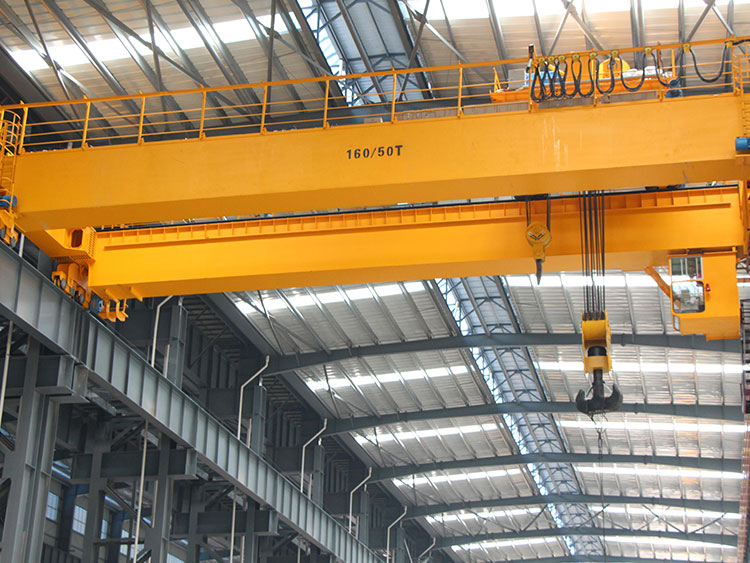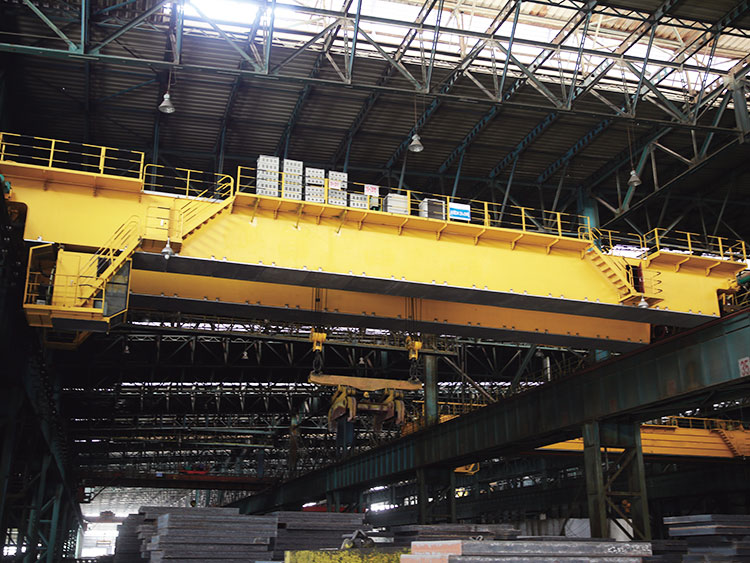When businesses invest in heavy-duty overhead cranes, they are making a significant commitment to their operations, productivity, and efficiency. However, the selection process often focuses on immediate needs, overlooking the potential for future expansion. Given the investment involved and the crane’s pivotal role in material handling, it is crucial to plan for future growth and scalability. This article outlines essential considerations for selecting a heavy-duty overhead crane with an eye toward future expansion.

Understanding Your Current Needs
Before delving into future expansion, it is vital to assess your current operational requirements. This evaluation includes:
- Load Capacity: Determine the maximum weight you will regularly lift. This will help you select a crane with an appropriate load capacity. It’s important to choose a crane that can handle the heaviest items in your current inventory, but consider the possibility of needing to lift heavier loads in the future.
- Span and Lifting Height: Assess the area where the crane will operate. Measure the width of the workspace and the height of the structure to determine the necessary span and lifting height. Ensuring you have adequate vertical space can provide room for future projects that might require lifting taller items.
- Operational Environment: Consider whether the crane will be used indoors or outdoors. Factors such as weather conditions, humidity, and the presence of corrosive materials can influence the type of Aicrane overhead crane you select. Choosing a crane designed for harsh environments will be crucial for long-term reliability.
Evaluating Future Growth Potential
Once you understand your current needs, the next step is to evaluate your potential for future growth:
- Business Expansion Plans: Look at your company’s growth trajectory. Are you planning to increase production, add new product lines, or enter new markets? Understanding your business goals will help you select a crane that aligns with your long-term vision.
- Technological Advancements: The manufacturing landscape is evolving rapidly, with innovations in automation, IoT, and material handling. Consider how these advancements might affect your operations in the next few years. Opting for a crane that can integrate with new technologies will save you the hassle of replacing equipment as your operations evolve.
- Regulatory Changes: Stay informed about industry regulations that may impact your operations. Changes in safety standards or environmental regulations could necessitate upgrades to your equipment. Selecting a crane that complies with current and anticipated regulations will ensure that your operations remain compliant in the future.

Key Features for Future-Proofing Your Crane Selection
When selecting a heavy-duty overhead crane, there are several features that can facilitate future expansion:
- Modular Design: Choose a crane with a modular design that allows for easy upgrades or expansions. For instance, some eot cranes can be easily modified to increase load capacity or incorporate additional features such as automated controls. Modular cranes provide flexibility and can adapt to changing needs without requiring a complete overhaul.
- Load Monitoring Systems: Investing in advanced load monitoring systems can enhance safety and efficiency. These systems can provide real-time data on load weights and help prevent overloads, ensuring that your crane operates safely even as your lifting needs increase.
- Remote Control and Automation: Consider cranes equipped with remote control capabilities or automation features. These technologies can streamline operations, reduce labor costs, and enhance safety. As your operations expand, automated systems can handle larger volumes of work without the need for significant additional manpower.
- Multiple Configurations: Select a crane that offers various configurations, such as single-girder and double-girder setups. This flexibility allows you to adapt the crane to different applications or project types as your needs change.
Conducting a Cost-Benefit Analysis
A thorough cost-benefit analysis is essential when planning for future expansion. This analysis should include:
- Initial Investment vs. Long-Term Costs: While a heavy-duty overhead crane may require a substantial initial investment, consider the long-term costs associated with maintenance, repairs, and potential replacements. A more expensive crane with superior technology and durability may save you money in the long run.
- Return on Investment (ROI): Evaluate how the crane will contribute to your overall productivity and efficiency. A crane that enhances operational capabilities can result in increased throughput, reduced labor costs, and improved safety, ultimately leading to a favorable ROI.
- Financing Options: Explore financing options that can ease the burden of the initial investment. Leasing or financing can allow you to acquire a high-quality industrial overhead crane without depleting your capital reserves, freeing up funds for other areas of your business.
Collaborating with Experienced Suppliers
Choosing the right supplier is critical to ensuring that your crane selection process aligns with your future expansion plans:
- Expertise and Support: Partner with suppliers who have experience in the heavy-duty crane industry. Their expertise can provide valuable insights into selecting the right crane for your needs and future plans.
- Customization Options: Look for suppliers that offer customizable solutions. A one-size-fits-all approach may not suit your unique operational requirements. Suppliers who can tailor their products to meet your specific needs will provide you with a more effective long-term solution.
- After-Sales Support: Ensure that the supplier offers comprehensive after-sales support, including installation, maintenance, and repair services. Reliable support can extend the lifespan of your crane and ensure it operates efficiently throughout its life.
Conclusion
Selecting a heavy-duty overhead crane is a significant decision that impacts your operations, productivity, and growth potential. By carefully evaluating your current needs and planning for future expansion, you can make an informed choice that will serve your business well for years to come. Consider factors such as load capacity, technology, environmental conditions, and supplier expertise to ensure that your investment is sound and adaptable to your future goals. With the right crane in place, you will be well-equipped to meet both present and future challenges in your material handling operations.
